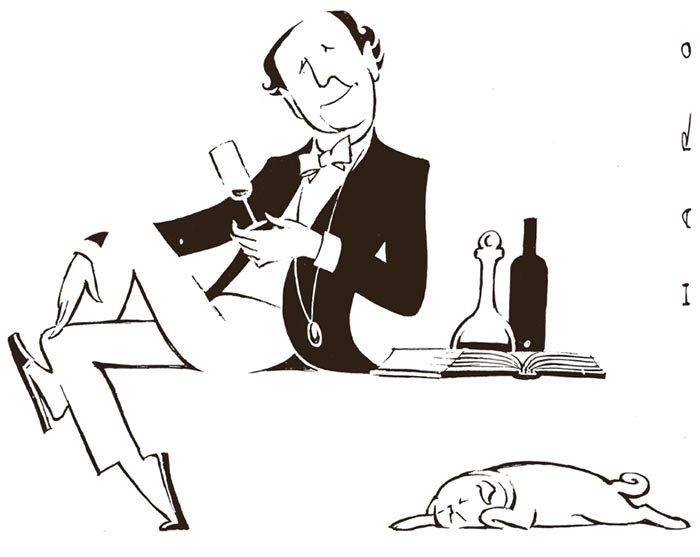Advice: Sir Lunchalot
Author: Berry Bros. & Rudd

Dear Sir,
My wife and I have recently tied the knot and are now enjoying all the wonderful items from our gift-list being delivered to our brand-new marital home. The only thing is people seem to have gone off-piste and we’ve been sent no less than seven wine decanters in an array of shapes and sizes (we hope our reputation does not precede us!). The thing is, we’re a bit stumped at how to actually use the things. Can you advise?
How lovely! Well, first of all, many congratulations to you and your beloved. I’m sure you have many great bottles ahead. Secondly, what a wonderful problem to have. Most wines, irrespective of colour, age or price will benefit from decanting, so it’s a good habit to get into. The trick is to choose the right vessel and the decanting time ahead of drinking. If you get that nailed, it will give you the best out of every bottle, irrespective of other factors.
Young reds will open up enormously with time in a broad based “ships decanter”; while old and fragile wines often just need to blow off the cobwebs, so a taller, thinner decanter stops them disappearing too quickly. Whites, especially infants, benefit from air too: try decanting young white Burgundy and standing the decanter in ice. Rich, round wines can really open up beautifully.
With older wines and Vintage Port, the practice is for an entirely different purpose. To save a mouthful of sediment, the art of decanting is used to separate liquid from solid. In mahogany-clad boardrooms, it is often performed with much pomp and circumstance – decanting cradles, candles, fancy corkscrews… the sky really is the limit. In truth, all you need is the ability to see when the solid particles pass into the neck of the bottle (a white background is useful for this). Ideally the bottle should be stood up for a day or so before opening, to settle any deposits, then care and attention is the name of the game. Uncork the wine upright, and then slowly pour the wine off its sediment. When you see the particles coming through, stop decanting – it’s better to lose a little bit of wine than let sediment infiltrate your glass.
Enjoy your new collection and enjoy experimenting with decanting times… but most of all enjoy the good times they give you!
Have you got a question for Sir Lunchalot? Please email editor@bbr.com or leave it in the comments selection below.


